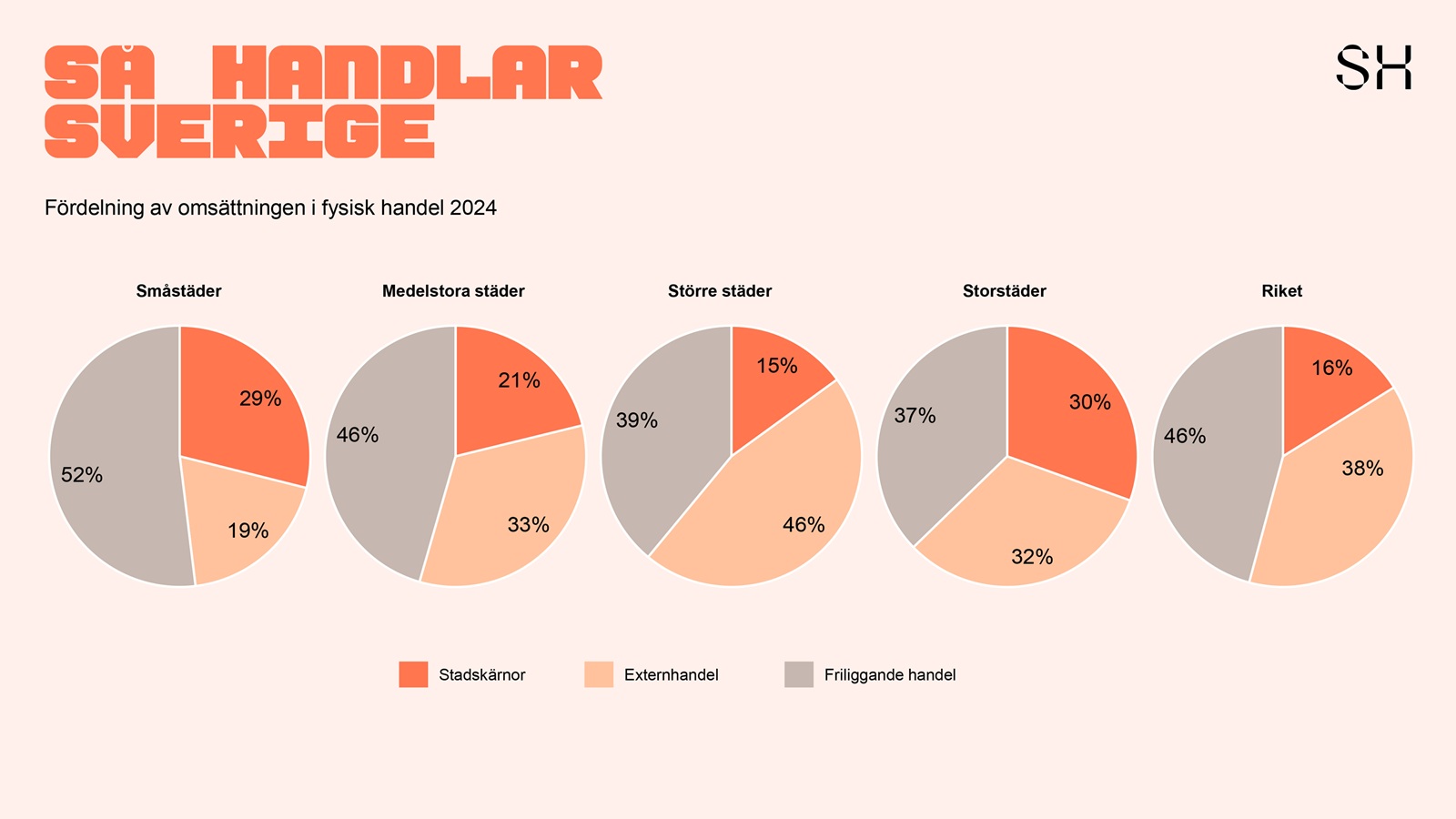According to a new report from the Swedish Trade Federation, which shows how consumption patterns are changing, the number of physical stores in Sweden is decreasing, especially in small towns. Despite this, the majority of purchases are still made in physical stores.
In the big cities, the number of stores decreased by eleven percent between 2018-2024. In small towns, the decline is even greater, with almost a third of the stores disappearing.
“Without trade, not only jobs and tax revenues disappear, but also the vibrant city. The decreasing number of stores is worrying, but we are convinced that the trend can be broken. Including trade in early-stage urban planning is a first step towards a more vibrant city,” says Elisabet Elmsäter Vegsö, a business policy expert at the Swedish Trade Federation.
READ ALSO: Threats and Violence Against Stores at Record Levels
The report “Trade Map – How Sweden Shops” also shows that the majority of Swedes’ shopping still takes place in physical stores. At the national level, physical trade accounts for 86 percent of retail turnover, distributed with 14 percent in city centers, 33 percent in external trade, and 39 percent in so-called standalone trade.
In 2024, e-commerce accounted for 14 percent of retail turnover. In small towns and big cities, consumers make a larger proportion, close to 30 percent, of their purchases in city centers, while larger municipalities have more consumption in external trade, equivalent to 46 percent.

Will Continue to Coexist
“Consumption in the Commercial Land of Sweden takes place, and will continue to take place, both physically and digitally. The strong development of e-commerce will continue, but not necessarily at the expense of physical trade. We believe that they will continue to coexist,” says Maria Mikkonen, chief economist at the Swedish Trade Federation.
The Trade Map also shows that municipalities with both external trade and city centers account for over two-thirds of Sweden’s total retail turnover. These municipalities have also had a stronger growth than the national average.
“The discussion about external trade and city centers killing each other is exaggerated. When trade is planned as a whole, where different trading places complement each other, it contributes to both growth and well-being. It is an important insight for the future both at the national and local level,” says Elisabet Elmsäter Vegsö.

READ ALSO: This Irritates Swedes the Most in the Store
